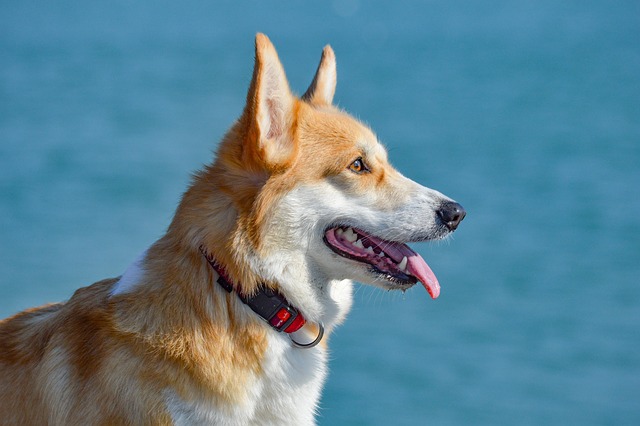
Do vets recommend sunscreen for dogs
In the sun - soaked backyards of California, the sandy beaches of Australia, and the picturesque parks across Europe, dogs frolic under the open sky.
When the sun is scorching hot and the streets are burning under the sun, and the once lively and energetic dog suddenly collapses to the ground, breathing rapidly, with its tongue sticking out far and saliva dripping uncontrollably, at that moment, the owner's heart seems to be tightly gripped. Heat stroke in dogs is an emergency situation that may occur during the process of pet ownership. Every second of delay may put their lives in a more dangerous situation. Knowing the first aid methods for dogs after heat stroke is not only a reserve of professional knowledge but also a manifestation of the deep love and responsibility for these furry companions.
Identifying the symptoms of heat stroke in dogs is the first step in implementing first aid. Dogs have relatively weak thermoregulatory abilities. They are prone to heat stroke in high-temperature and high-humidity environments or when they are exposed to the sun for a long time after strenuous exercise. In the early stage, the dog will show listlessness, no longer being as lively and active as usual, and losing interest in toys and the owner's calls. Then, the breathing will become rapid and heavy, the panting sound will be significantly louder, the tongue will turn an abnormally bright red color, and the oral mucosa will become dry and hot. As the heat stroke worsens, the dog may experience symptoms such as vomiting and diarrhea, and there may even be blood streaks in the vomit and excrement. In more severe cases, the dog will fall into a coma, with its limbs twitching and its body limp. At this time, they are in a life-threatening situation and urgently need the owner to take emergency measures.
Once you find that the dog shows symptoms of heat stroke, the owner must take immediate action. The primary task is to move the dog to a cool and ventilated place, away from the high-temperature environment. You can quickly carry the dog to an air-conditioned room indoors, or to a cool place such as under a big tree or under the eaves, to avoid direct sunlight. At the same time, untie the dog's collar, harness, and other restrictive items to allow their bodies to dissipate heat more freely. During this process, the movements should be gentle and rapid, and try to minimize the stimulation to the dog, because their bodies are already very fragile when they have heat stroke.
 Next, cool the dog down as soon as possible. You can apply a towel soaked in cold water or an ice pack to the parts of the dog's body where the major arteries are distributed, such as the head, neck, abdomen, and the inner side of the thighs. These parts are rich in blood vessels, and cold compresses can effectively lower the blood temperature, thereby helping the body dissipate heat. However, it should be noted that you cannot directly pour ice water at too low a temperature on the dog. Too low a temperature may cause the dog's blood vessels to constrict, which is instead not conducive to heat dissipation and may even cause shock. You can also gently spray cold water on the dog's body and use a fan to blow air at the same time to accelerate the evaporation of water and take away the heat. During the cooling process, closely observe the dog's reaction. If the dog shows symptoms such as shivering, it means that the cooling speed is too fast, and you need to stop immediately to prevent the body temperature from being too low.
Next, cool the dog down as soon as possible. You can apply a towel soaked in cold water or an ice pack to the parts of the dog's body where the major arteries are distributed, such as the head, neck, abdomen, and the inner side of the thighs. These parts are rich in blood vessels, and cold compresses can effectively lower the blood temperature, thereby helping the body dissipate heat. However, it should be noted that you cannot directly pour ice water at too low a temperature on the dog. Too low a temperature may cause the dog's blood vessels to constrict, which is instead not conducive to heat dissipation and may even cause shock. You can also gently spray cold water on the dog's body and use a fan to blow air at the same time to accelerate the evaporation of water and take away the heat. During the cooling process, closely observe the dog's reaction. If the dog shows symptoms such as shivering, it means that the cooling speed is too fast, and you need to stop immediately to prevent the body temperature from being too low.
Replenishing water for the dog is also a key first aid measure. Heat stroke will cause the dog to lose a large amount of water, and timely replenishment of water can relieve the symptoms of dehydration. You can use a spoon or syringe to feed the dog water in small amounts and multiple times to avoid causing vomiting due to feeding too much at one time. If the dog has already fallen into a coma and cannot drink water on its own, never force-feed it water, as it may choke into the trachea and cause suffocation. At this time, you can wipe the dog's mouth with a wet towel to keep the mouth moist and wait for professional rescue. At the same time, if you have pet-specific electrolyte replenishment solution at home, give the dog an appropriate amount according to the instructions, which can help them replenish the electrolytes lost due to heat stroke and maintain the body's acid-base balance.
After the initial first aid treatment, the dog should be taken to a pet hospital as soon as possible. The veterinarian will conduct a comprehensive examination and professional treatment of the dog. The doctor may quickly replenish water and electrolytes through intravenous infusion to correct the conditions of dehydration and electrolyte disorders. According to the dog's specific symptoms, the doctor will also use drugs to regulate the body temperature, protect the function of important organs, and deal with possible complications, such as kidney damage and abnormal liver function. During the treatment process in the hospital, the owner should actively cooperate with the doctor and inform the doctor in detail about the situation of the dog before and after heat stroke, so that the doctor can formulate a more suitable treatment plan.
The rehabilitation care of dogs after heat stroke should not be ignored either. Even if they are out of danger of life, the dog's body will still be very weak for a period of time. Provide them with a quiet, cool, and comfortable resting environment to avoid being stimulated by high temperature again. In terms of diet, give them easily digestible and nutritious food, eat small meals frequently to help the dog regain its strength. At the same time, closely observe the dog's mental state, eating situation, defecation, and urination, etc. Once any abnormalities are found, communicate with the doctor in a timely manner.
Every time we face the heat stroke crisis with our dogs, it is a test of the owner's emergency response ability and emotions. When we see the once dying dog regain its vitality and run happily with its tail wagging, all the anxiety and efforts turn into relief and touch. Mastering the first aid knowledge for dogs with heat stroke is not only to deal with sudden situations but also to interpret the guardianship of these lovely lives with actions, so that they can stay away from danger and grow up healthily and happily under our company.

In the sun - soaked backyards of California, the sandy beaches of Australia, and the picturesque parks across Europe, dogs frolic under the open sky.

Picture your dog lounging belly-up in the backyard or trotting alongside you on a coastal hike – that sunshine feels glorious

If you’ve ever found yourself staring at your dog’s nails, clippers in hand, and wondering whether to clip them wet or dry, you’re not alone.

If you share your home with a Labrador Retriever, you’re likely no stranger to fur-coated floors, tumbleweeds of undercoat drifting across your kitchen

Ever come home feeling like the weight of the world’s on your shoulders, only to have a furry ball of excitement greet you at the door? That’s just the start of how dogs work their magic on our mental health.

Picture this: it’s bath time for your pup, and you’re fresh out of dog shampoo. As you reach for your own coconut-scented shower gel